Depending on what you are using it for, laying your hands on a ribbon microphone could be one of the best things to ever happen to you as a musician or audio engineer. For many audio professionals, ribbon microphones remain the most natural microphones ever.
Because of how natural it sounds and how much it is like an actual human ear, you can use it to capture the sound of most musical instruments, the human voice, and even the ambience of a room without the fear of excessive tonal colouration or obstruction.
Also, due to the fact that they are always bi-directional (except designed otherwise), it is always best for massive low-end pick-up and a natural high-frequency roll-off; ribbon microphones do really hear as an actual human hears. They are just pure and truly natural.
Because of their naturally warm and dark sound, they are very much ideal for both acoustic and electric guitars.
They are good at taming the higher frequencies that often overshadow electric guitar recording, especially when played at higher volumes; they return the low-end weight that is often needed for a more balanced and solid mix.
In this article, we are going to talk about one of the most amazing ribbon microphones you will ever lay your hands on. The Cascade Fathead is a ribbon mic assembled in the USA by Cascade Microphones and it remains one of the bests in the market.
Being assembled in the USA, you can rest assured that this mic is nothing but a product of top-tier microphone engineering and is also assembled under the supervision of top-class professionals and excellent quality control teams.
This microphone features a symmetrical ribbon design with the corrugated aluminium membrane positioned right in the centre from front to back, thus, producing a balanced audio input signal to both sides of the ribbon assembly.
In this article, we will tell you everything you need to know about the Cascade Fathead line of ribbon microphones.
Table of Contents
A Brief History of the Cascade Fathead
The Cascade Fathead ribbon microphone has become popular among audio engineers and artists. Cascade Microphones, situated in Olympia, Washington, USA, first released it in the early 2000s.
Scott Gordon, the company’s creator, is the first figure in the Cascade Fathead’s history. Gordon became fascinated by old ribbon mics and their distinct audio qualities as a musician and recording aficionado.
He saw the possibility of modern ribbon microphones to capture the classic sound while combining advancements in technology and design. Gordon established Cascade Mics in 1998 to make premium ribbon mics at a competitive price.
The Cascade Fathead was created after several years of study and creation. It became popular among fans and audio professionals when it hit the market in the early 2000s.
The RCA 44 and Royer R-121, two popular ribbon microphones from the middle of the 20th century, served as design models for the Fathead. A long, narrow ribbon hanging between two powerful magnets produces the microphone’s audio signal.
Due to the ribbon element’s ultra-thin aluminium construction, sound waves may be detected and responded to with outstanding sensitivity and accuracy.
Smooth and natural sound reproduction is one of Cascade Fathead’s distinctive features. It is renowned for its detailed high-frequency recording and warm, vintage-like tone.
Due to its figure-of-eight polar pattern, the microphone is appropriate for various recording tasks, including studio vocalists, acoustic instruments, and guitar amplifiers.
Cascade Microphones has diversified the models and variations in its Fathead product line to meet various recording requirements.
The user can alter the microphone’s performance and sound to fit their tastes by choosing from various ribbon lengths, motor designs, and transformer options.
Cascade Fathead Frequency Response
The Cascade Fathead is a ribbon microphone known for its smooth and warm sound. The Cascade Fathead is like most ribbon mics in that it has a natural and balanced frequency response.
They are known for how well they play midrange sounds and how smoothly they roll off at high frequencies.
Ribbon microphones also have a good low-frequency response. They can pick up deep bass tones with clarity and warmth.
What Makes the Cascade Fathead So Special and Different From Other Ribbon Mics?
The Cascade Fat Head II ribbon microphone is recognized for its warm and fat sound. It captures auditory vibrations and converts them into an electrical signal using a thin metal ribbon hanging in a magnetic frame.
The microphone features a figure-8 polar pattern, which means it picks up sound equally from the front and rear, necessitating careful positioning to avoid muddiness.
The Fat Head II’s design is appealing, with a lollipop-style mesh grill and a satin-finished mic body. It is well-equipped, with a flight case, hardwood box, and a double-wired shock mount.
The microphone’s sound is smooth and pleasant, with a vintage-like quality rather than clinical accuracy.
However, ribbon microphones, in general, have certain concerns. They are delicate and readily harmed by drops or powerful bursts of air.
Dust and particles should be kept away from the magnets, and placing the microphone horizontally should be avoided to avoid ribbon damage.
Furthermore, ribbon microphones require a high gain preamp to boost their low output signal, and care should be given to avoid connecting them to a phantom power source.
Cascade Fathead Models
Cascade Fathead II
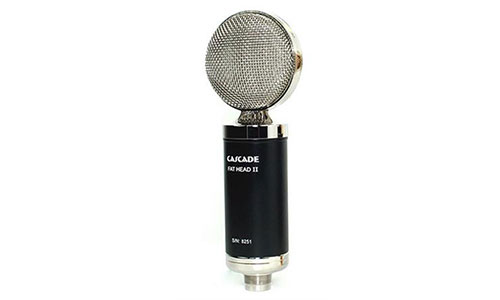
With its distinctive design, the Cascade Fathead II Active/Passive ribbon microphone enables users to alternate between active and passive modes.
The silent differential circuit used in the active mode allows for large gain while maintaining a low noise level, by isolating the ribbon element out of the preamp when in active mode, ribbon loading-related colouring is reduced.
The microphone is appropriate for recording loud sources because it can withstand sound pressure levels (SPL) up to 135 dB.
Designed to be used with high preamps, the passive mode gains with enough gain to power the microphone, removing noise often present in low-gaining preamps.
A Lundahl LL2913 ribbon mic transformer is incorporated into the microphone to balance the frequency response and optimize the load on the element of the ribbon.
The signal output of the transformer and the signal amplified and supplied to the XLR connection can be selected using the microphone’s switch.
Specs
- Active electronics, a 25 dB gain ribbon mic, a shock mount, and an aluminium enclosure.
- Diameter: 1 inch
- Length: 6.5 inches
- Solid State or Tube: Solid State
- Ribbon transducer type
- Bi-Directional/Figure-Eight Polar Pattern
- Single Microphone
- Impedance is 200 Ohms
- The frequency range is 25 Hz to 16 kHz
- sensitivity is 1 mV/V/m.
Cascade Mics’ Fat Head BE
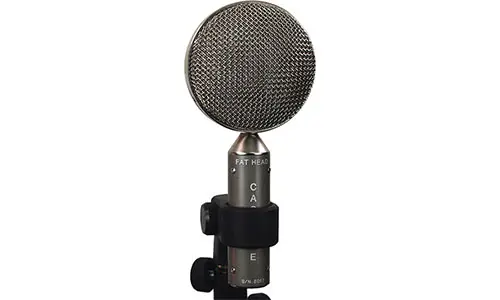
Cascade mics’ Fat Head BE (Bare Essentials) Short Ribbon Kit comprises two Cascade Fat Head BE Ribbon mics, two microphone clips, two leatherette pouches, and a stereo Blumlein bar, but without a wooden box, aluminium case, or shock mounts.
It can be used in studio applications to collect audio for electric guitars, drum overheads, horns, strings, banjos, mandolins, dobros, and other instruments.
The microphone has a realistic figure-8 polar pattern. From front to back, the membrane is positioned in the centre and sends a balanced audio input signal to both sides of the ribbon assembly.
The Fat Head’s trademark warm, full-bodied sound and enhanced sensitivity are what you’d expect and deserve from a professional ribbon microphone. It is ideal for guitar cabinets, vocals, and piano applications. It is also ideal for usage on stage.
Specs
The Cascade Microphones 96-BES-A is a ribbon capsule mono microphone. It has a figure-8 polar pattern and a 1.75″ (44.45 mm) diaphragm, which means it captures sound evenly from the front and rear while rejecting sound from the sides.
The microphone has a frequency range of 25 Hz to 16 kHz, which allows it to capture a wide range of audio frequencies. It has a maximum SPL (Sound Pressure Level) of 135 dB RMS, indicating it can handle loud sound sources without distortion.
The microphone has a load impedance of 1000 Ohms and a load impedance of 200 Ohms. Its sensitivity is -56 dB. The Cascade Microphones 96-BES-A includes two XLR 3-Pin Male analogue outputs easily linked to audio interfaces, mixers, or other recording equipment.
The microphone’s physical measurements are roughly 3″ x L 6.5″ (76.2 mm x L 165.1), showing its modest size and portability.
Cascade Fathead II Active/Passive
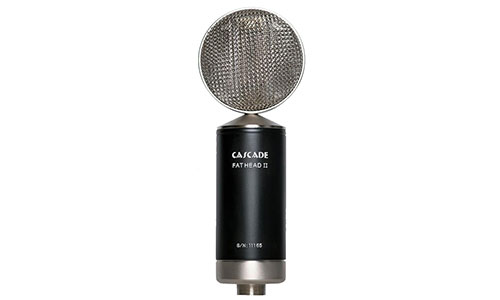
The Cascade Fathead II Active/Passive ribbon microphone operates in active and passive modes. It uses built-in circuitry for greater gain and output in active mode, making it perfect for low-output sources and lengthy cable runs.
It produces the conventional ribbon microphone sound in passive mode, with a smooth and natural response. It has a figure-8 polar design that captures front and rear sounds while rejecting side noise.
The Fathead II Active/Passive is a multipurpose recording microphone that may be used to record vocals, instruments, and a variety of other sound sources. Its two functioning modes allow it to adapt to various recording circumstances.
Review of Cascade Fathead
The Cascade Fathead is a ribbon microphone known for its warm and natural sound reproduction. Users generally give the Cascade Fathead positive feedback and commend it for its rich, smooth sound.
It is frequently complimented for its accessibility and adaptability, allowing it to fit in with different recording conditions.
The microphone should be handled carefully due to its fragile nature, and depending on personal recording preferences, the slightly constrained high-frequency response should be considered.
In conclusion, the Cascade Fathead is an appealing option for those desiring the traditional ribbon microphone sound.
It is a desirable option for home studios, project studios, and even professional settings because of its warm timbre and price
Users must consider its brittleness and the potential downside of a slightly darker high-frequency response. We’ll examine the microphone’s advantages and disadvantages in this review, considering user comments and offering a dispassionate evaluation.
Pros
- Smooth and Warm Sound
The Cascade Fathead’s ability to record a smooth and warm sound is one of its best qualities. It is popular for recording vocals, acoustic instruments, and electric guitar cabinets because it reproduces midrange frequencies smoothly.
- Adaptability
Users value Fathead’s adaptability in a variety of recording situations. It produces great results in more delicate acoustic conditions and can manage high sound pressure levels (SPL), making it suited for close-miking loud sources.
- Affordable pricing
The Cascade Fathead offers outstanding value for its pricing compared to comparable ribbon mics on the market. It offers a trustworthy alternative for those looking for the distinctive sound of a ribbon microphone without spending a fortune.
Cons
- Delicate
Like the Fathead, Ribbon microphones are typically more delicate than dynamic or condenser microphones in handling.
According to users, reasonable caution must be exercised to prevent damage, particularly during transportation or exposure to severe winds. Hard handling or excessive phantom power usage may also harm the ribbon element
- Frequency Response
The Fathead excels at picking up midrange frequencies, but its high-frequency response may not be as extensive as other condenser microphones.
- sound
This restriction may provide a slightly darker or rolled-off sound, which might only be optimal for some recording applications.
Does the Cascade Fathead need phantom power?
Phantom electricity can impair or even destroy the ribbon elements in some vintage ribbon microphones. As a result, when employing ribbon microphones, it is widely advised that phantom power be switched off.
The ribbon might become stretched or entirely blown when phantom power is left on. On the other hand, the Cascade Microphones FAT HEAD II Active/Passive ribbon microphone is a first for this type of design.
This one-of-a-kind feature allows one to switch to different modes with an internal switch. The Active mode uses phantom power which adds up to 20 dB of boost that allows one to use the Fathead microphone with various preamps).
What are ribbon mics good for?
Ribbon microphones are versatile tools for recording various sound sources such as guitars, drum overheads, vocals, brass, strings, room ambience, spoken word, foley effects, choirs, ambient sounds, and acoustic piano.
They are distinguished by their sensitivity, warm sound, and ability to capture detail and depth.
Ribbon microphones are popular for vocal recording, particularly in broadcasting, because of their sensitivity and ability to catch low-end frequencies, which lend weight and richness to the sound.
To avoid distortion or potential damage, vocalists must be careful of the ribbon’s sensitivity and avoid coming too close or singing too loudly.
Ribbon microphones are ideal for recording electric and acoustic guitars because they produce a warm and dark tone while suppressing excessive high frequencies and improving low-end weight. They can also effectively handle high-gain electric guitar cabinets.
Ribbon microphones are ideal for recording drum overheads because they provide depth and weight to the sound while decreasing shrillness from cymbals.
Ribbon microphones are less sensitive to high-frequency sounds, making them ideal for capturing brass and woodwind instruments.
They improve these instruments’ low-end and warmer range while lowering honking and handling high sound pressure levels. Ribbon microphones produce a dramatic and spacious tone while recording strings.
The bidirectional recording pattern preserves information while providing an atmosphere to the room. Even in small spaces, the figure-of-8 pattern may take advantage of the existing atmosphere, giving weight to the sound and making it excellent for soundtracks.
Ribbon microphones, in summary, offer a wide range of applications and excel at capturing detail, warmth, and depth in various sound sources. However, they must be handled carefully to protect the fragile ribbon element.
Where are Cascade Fathead Microphones Made?
Cascade Fathead mics are designed and manufactured in the United States. Cascade Microphones, the Fathead series’ manufacturer, is in Olympia, Washington. Their mics are designed and manufactured in the United States.
Are There Any Famous Musicians/Engineers Who Use the Cascade Fathead?
Cascade Fathead ribbon mics have been used in recordings by well-known musicians and engineers. Here are a couple;
- Dave Grohl
Cascade Fathead ribbon microphones have been utilized on drums and guitar cabinets in numerous recording sessions by Dave Grohl.
- Joe Barres
In Joe Barresi’s recordings, Cascade Fathead ribbon microphones have been utilized on guitar cabinets and other instruments. He has collaborated with Tool, Queens of the Stone Age, and Soundgarden.
- Producer/Engineer Tchad Blake
Tchad Blake, a Grammy-winning producer and engineer, has used Cascade Fathead ribbon microphones in his recordings on drum overheads and other instruments. He has collaborated with Sheryl Crow, the Arctic Monkeys, and The Black Keys.
- Ryan Hewitt (Producer/Engineer)
Known for his work with Red Hot Chili Peppers, Blink-182 and The Lumineers, Ryan Hewitt has used Cascade Fathead ribbon microphones on various sources, including guitar amps and drum overheads.
Conclusion
Cascade Fathead ribbon microphones are noted for their warm and nostalgic tone. Fathead II, Fathead BE, and Fathead II Active/Passive are among the models available.
The Fathead II Active/Passive operates in active and passive modes, delivering increased gain, output, and a traditional ribbon sound.
It features a figure-8 polar pattern and is popular among musicians and engineers like Dave Grohl and Joe Barresi. Cascade Fathead microphones capture instruments and vocals with clarity and detail.

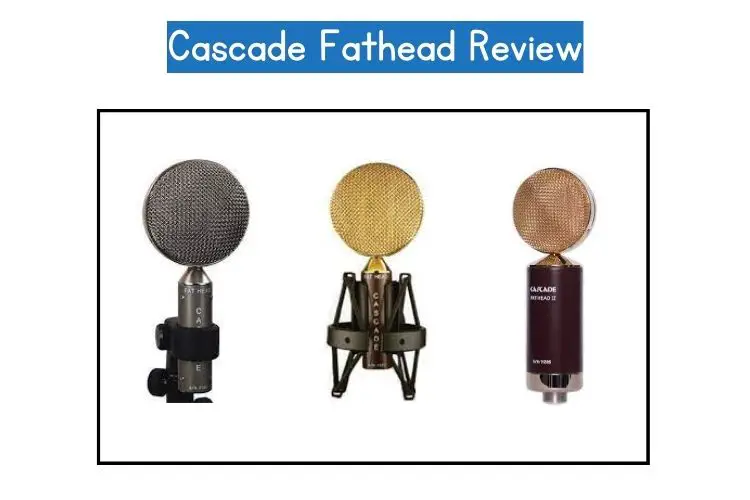
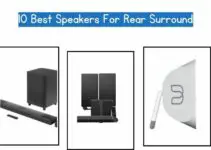

![10 BEST DAWs for Film Scoring [Buying Guide + Pros & Cons]](https://performerlife.com/wp-content/uploads/2023/05/10-Best-DAWs-for-Film-Scoring-1-211x150.jpg)
